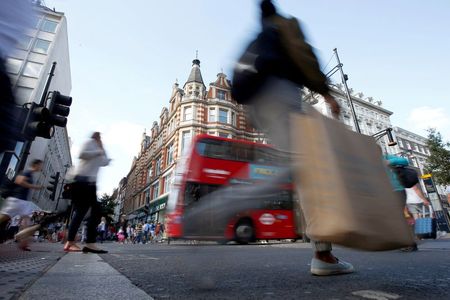TfL pledges to make London world’s ‘most walkable city’, which could aid SMEs

TfL has pledged today to make London the world’s ‘most walkable city’ and will programme 18 pedestrian crossings to show green walking signal until traffic approaches.
The programmed crossings are set to prioritise people walking and will be installed by the end of next month.
Six crossings have already been programmed in Tower Hamlets, Newham, Hounslow, Richmond and Hillingdon.
The City of London will receive two pedestrian priority crossings by June, while two will be installed in Barking and Dagenham, another in Richmond, and one each in Merton, Southwark, Sutton and Westminster.
In a bid to make the capital’s transport network more sustainable, the signals, known as ‘Green Person Authority’ signals, will enable more journeys on foot, TfL said in a statement today.
The number of journeys made on foot has soared since the start of the pandemic, with 31 per cent of Londoners saying they walked placed they used to travel to differently, according to TfL data from earlier this year.
While 57 per cent said they now go on more walks or walk for longer than they did before.
Amid the peak of the pandemic last year, the number of journeys made on foot rose from 35 per cent of journeys to nearly 50 per cent – the pledge hopes to boost these figures.
High street spending
The pledge, alongside TfL’s Lane Rental scheme, which will see companies charged for works on busy pavement areas, will help ailing shop revenues and disabled people alike.
More space on pavements, alongside pedestrian priority, would make high street life slightly easier for disabled folk.
“By combining this with creating extra pavement space and ensuring roadworks are carried out in a way that doesn’t disrupt Londoners, we will make our city the world’s most walkable and eradicate collisions on our streets,” London’s walking and cycling commissioner, Will Norman, said.
It may also bolster spending with the capital’s struggling SMEs, which have swallowed a huge financial hit throughout the pandemic.
On average, people who walk regularly to high streets spend up to 40 per cent more than those who drive, according to TfL data.
“We’re determined to make it easier for people to cross the road and to give people the space they need to walk safely, and these initiatives will make a difference in enabling more people to access local high streets, shops and other businesses in a sustainable way,” TfL’s head of network performance, Nick Owen, said.
The British Retail Consortium supported the idea to make high streets more accessible.
“By encouraging and supporting people to walk around these areas, we make the area more sustainable – socially, environmentally and economically. This helps shops and other businesses to thrive,” property policy advisor, Dominic Curran, told City A.M.
The impacts the new signals may have on congestion is yet to be revealed, as TfL explores new locations where ‘Green Person Authority’ crossings can be introduced, with the aim to increase them over the next few years.
The Licensed Taxi Drivers Association did not respond for comment.